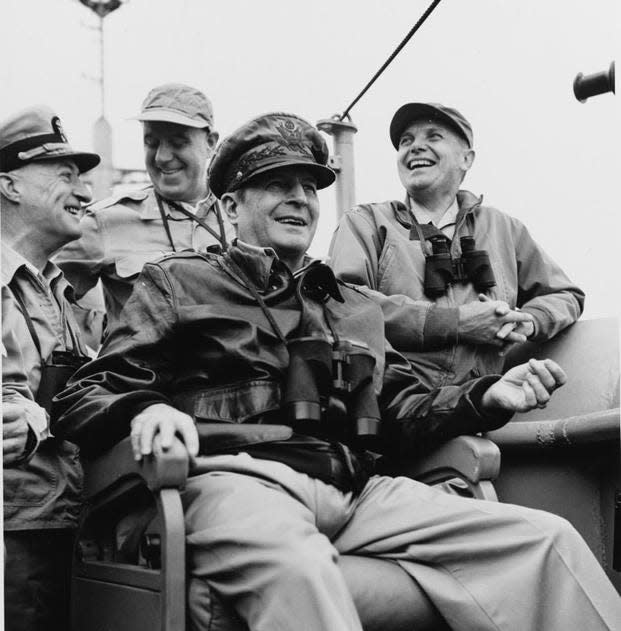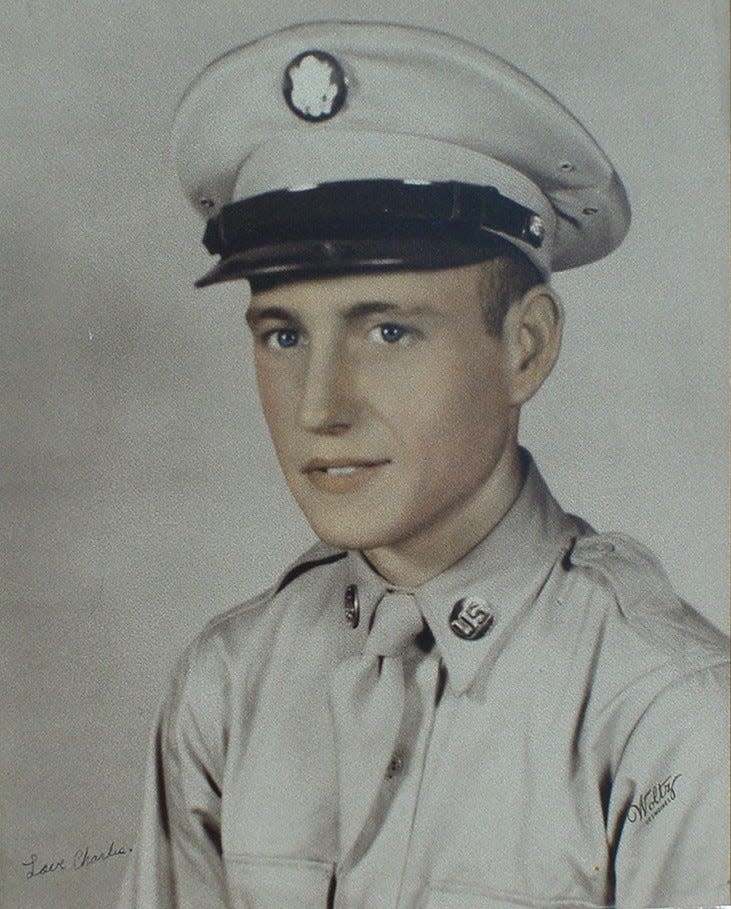Remembering Korea: Part I: The Early Years of the War,1950-51
- Oops!Something went wrong.Please try again later.
(This is part one of a three-part series marking the 70th anniversary of the Korean War. Look for part two in the Avalanche-Journal next week.)
The Korean War is known by many different names. Here in the United States, it’s often referred to as a “Police Action, the “Forgotten War” and the “Unending War.” In North Korea, it’s called the “Fatherland Liberation” and in South Korea, it’s called the “Six-Two-Five,” which references the date the war started on June 25, 1950. Even China has given it the even longer name of the “War to Resist U.S. Aggression and Aid Korea.” There’s a kernel of truth in all those names to each country involved.
After WWII, the country was divided at the 38th parallel. The U.S. and the Soviet Union agreed to divide the country in 1945, with the Soviets controlling the North and the U.S. the South. The war began and started at the 38th Parallel. The North Koreans invaded South Korea. The U.S. was already pulling out of South Korea but got involved when President Harry S. Truman called for air and naval support. The United Nations called upon other nations to assist South Korea and over 15 countries would participate in the war. This was also the first hot war of the so-called Cold War, so named for the U.S. commitment to defeat communism from spreading worldwide.

The United States was not initially prepared to fight in Korea. The country was war weary after WWII ended in 1945. At that point, the U.S. over 12 million military personnel in uniform. The surrender of Germany on May 7, 1945, followed by Japan on Sept. 2, 1945, quickly saw a demobilization of forces from both Europe (which had already began troop reduction) and the Pacific Theater. The consequence of rapid demobilization left the U.S. woefully unprepared for future confrontation(s). By June 30, 1947, the number of military personnel was only 1,566,000 - a whopping 87% reduction. Additionally, the unpopular draft was ended in March 1947. This alarmed military planners. Due to the spread of communism by the Soviet Union and China, the draft was restored in June 1948 and was only supposed to be in effect for two years. The act kept being extended and was still in effect when North Korea stormed across the 38th parallel to attack South Korea.
President Truman persuaded the United Nations to assume responsibility for South Korea. On July 8, Truman appointed Gen. Douglas MacArthur in charge of the UN war effort. He operated the war from his office in Japan where he had been since the end of WWII. MacArthur sent three U.S. divisions to help South Korean troops hold back the invading hoard. Undermanned and with inadequate weapons, U.S. ground forces fought and died near Osan, Taejon and Taegu. Supplies such as tanks, rocket launchers, cannons and airplanes finally started arriving at the port of Pusan and helped turn the tide. By August of 1950, the United Nations Command started slowing down the North Koreans.
Realizing it would become a long and protracted war, MacArthur and his staff devised a new strategy. MacArthur had been in favor of an amphibious landing as early as July 1950. He decided to land behind the enemy forces at Inchon (called Operation Chromite) which was a port for Seoul on Korea’s west coast. The Korean forces were much thinner there and on Sept. 25, 1950, MacArthur and South Korean President Syngman Rhee had the 1st Marine Division, The Army’s 7th Infantry Division and some South Korean divisions march into the capital. Seoul was liberated. The North Koreans lost 13,000 troops to capture and suffered 50,000 casualties. However around 25,000 fled through the mountains and 10,000 remained in South Korea.

After the capture of Seoul, the 1st Marines and the Army’s 7th infantry were put back on ships and taken to the eastern port of Wonsan in October 1950, and they unloaded and began heading north. They would soon become involved in one the bloodiest and coldest battles of the Korean War at the frozen Chosin Reservoir. On the night of Nov. 27, 1950, a force of 120,000 Chinese attacked approximately 30,000 U.N. forces. On a personal note, the Korean War has been a part of my life since I was born in 1952. My uncle, Cpl. Charles A. Williams was a 60mm mortarman with the Army’s 7th Infantry and was killed the first night the Chinese attacked on the east side of Chosin. The battle would take place in temperatures ranging from -20 to -40 degrees. The casualties from combat and the cold were staggering – the U.S. suffered 18,000 casualties - 2,500 killed in action, 5,000 wounded and 8,000 from frostbite. The Chinese losses were even greater with casualty estimates close to 29,000 troops.
In early January 1951, the Chinese had surged south, attacking Seoul and retaking the city once again with both sides suffering numerous casualties. There was talk within the UN command that the war in Korea should be abandoned. However, the Chinese had overextended themselves and too far from their supply lined to continue deeper into South Korea. Only two months later, UN forces overtook the Chinese and attacked them at Seoul. The city was nearly destroyed due to the brutal city street fighting that claimed the lives of thousands. The communists eventually retreated from the city on March 15. This turned out to be the last time that Seoul would change hands for the duration of the war. The Chinese and North Koreans launched a counterattack in one more attempt to retake Seoul. Australian and Canadian UN forces were able to outfight the nearly 10,000 Chinese and they were once again forced to retreat from the capital city.
The war was now entering the second year with no end in sight. In spite of an overwhelming difference in the number of troops versus the Chinese and North Koreans, the UN forces were able to hold on. The new American U.S. Air Force (formed in 1947) has widely been seen as one of the largest contributors to the stalemate. They flew constant bombing runs against the Chinese dug-in positions and attached their supply lines which prevented further advances. This made it nearly impossible for the Chinese to make any large-scale offenses the rest of the war.
Next week – the war drags on.
(Larry A. Williams is a U.S. Air Force Veteran and the Veterans Liaison Co-Chair of the Texas South Plains Honor Flight. He is also co-author of "Texas South Plains War Stories.")
This article originally appeared on Lubbock Avalanche-Journal: Remembering Korea: Part I: The Early Years of the War,1950-51

